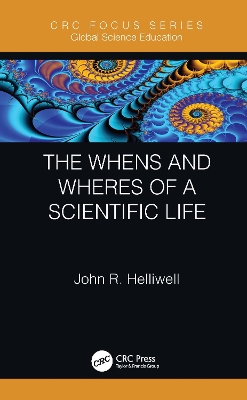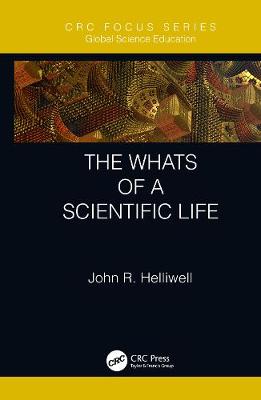Global Science Education
3 total works
The first in the Focus Series on Global Science Education, The Whys of a Scientific Life examines why scientists do what they do. Working from a diverse background in scientific research, including academic departments of physics and chemistry, as well as the scientific civil service, the author describes the choices scientists make. Fundamentally, a scientist asks questions based on curiosity. In addition, the environment is very important. By influencing their elected governments, society itself shapes the scientific research that is undertaken by scientists. This book follows on naturally from the author’s last book, Skills for a Scientific Life, which is a how-to guide for scientists and those that aspire to engage in science as a career.
Key Features:
Big questions and issues arise about the role of the scientific life in our society and in our world. These have to do with trusting science at all, or with the wider roles of the scientist. The Whens and Wheres of a Scientific Life serves as an epilogue to author John R. Helliwell’s scientific life trilogy of books on the Hows (i.e. skills), the Whys and the Whats of a scientific life. When and where questions play a big role in major science facility decisions. When and where also play a big role in controlling a pandemic like the coronavirus COVID-19. The consequences of such work and the role science plays in society are discussed in this book.
Key Features:
- Discusses when and where we can make new and better things happen and make new discoveries. Explains whens and wheres as examples in basic science and explaining these to the public
- User friendly and concise, this text provides a wide range of examples of science and discovery
- The author has diverse experience in career development, teaching and research
- The importance of open data to the reproducibility of science are described
This book completes a scientific life trilogy of books following on from the Hows (i.e. skills) and the Whys is now the Whats of a scientific life. Starting with just what is science, then on to what is physics, what is chemistry and what is biology the book discusses career situations in terms of types of obstacles faced. There follow examples of what science has achieved as well as plans and opportunities. The contexts for science are dependencies of science on mathematics, how science cuts across disciplines, and the importance of engineering and computer software. What science is as a process is that it is distinctly successful in avoiding or dealing with failures. Most recently a radical change in what is science is the merger of the International Council of Scientific Unions and the International Social Sciences Council.
Key Features:
- Dissects what is science and its contexts
- Provides wide ranging case studies of science and discovery based directly on the author’s many decades in science
- The author has outstanding experience in mentoring and career development, and also in outreach activities for the public and students of all ages
- The world of science today involves a merger of ‘the sciences’ and the ‘social sciences’


